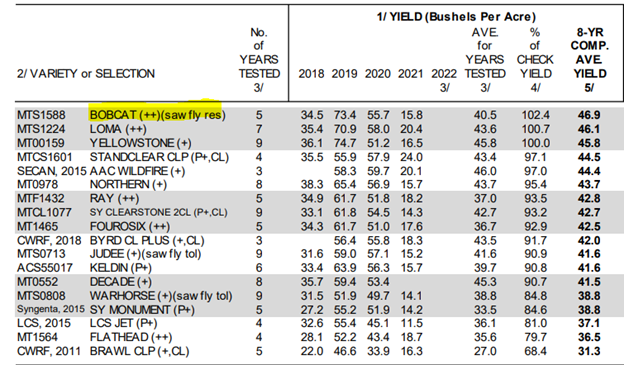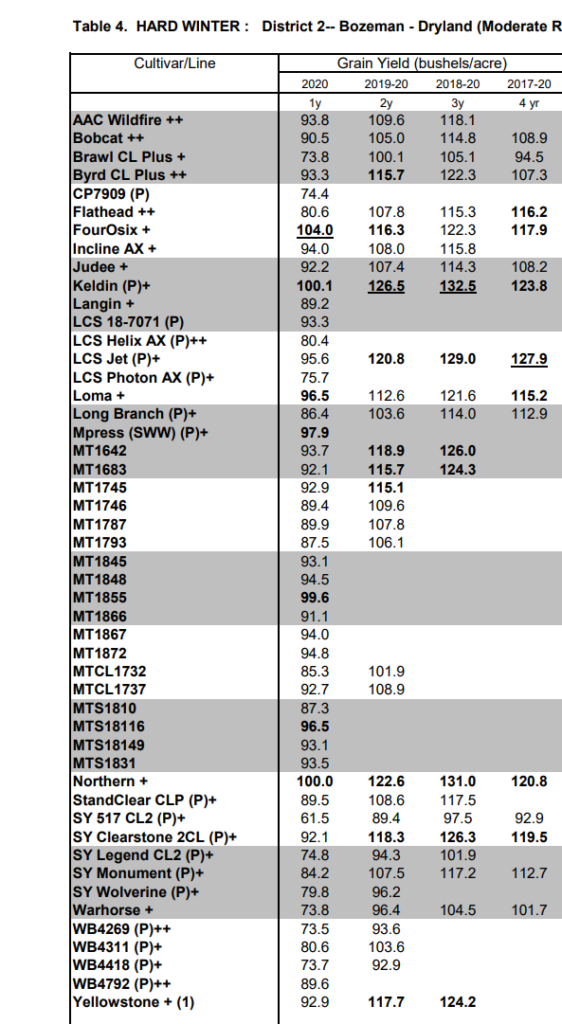Author: Sam Anderson
The wheat stem sawfly (WSS) lays larvae in the stem of grasses. Loss due to larvae is seen in overall yield due to damage to the stem beginning in the early stages of the development, but also to the iconic tipping over of stems that fall on the ground. The economic loss of this little pest really is hard to put a number on. Montana farmers know it’s a substantial loss. A 2018 article outlines the potential controls and their pitfalls very well.
Special thanks to Scott L Portman, Stefan T Jaronski, David K Weaver, and Gadi V VP Reddy for laying out the situation so well. Click Here to view their full article. I will try to summarize the article in simple terms.
Cultural Control: Solid Stems
Current solutions involve planting solid stem varieties in combination with pulse and oilseed rotations. Stem solidness can have a yield drag in the field. Montana State University is working to minimize the yield drag and new varieties are getting ever closer. Stem solidness has been incorporated into most wheat breeding programs. Two key targets moving forward are: to find a way to remove genetic variation in stem solidness and bridge the yield gap between hollow stem varieties. Stem solidness is a proven foundation for the control of WSS. If you have WSS, you should consider planting solid stem varieties.


3 types of Biological Controls
Parasitoids:
There are two species of parasitoids that can significantly reduce yield loss from WSS. Populations vary widely and are often not high enough for total WSS control. How do you increase parasitoid populations? You could release a sizable population in the field, but more studies are needed to determine the viability of this approach. You could plant specific crops that promote populations, flowering crops that produce nectar have been seen to have positive impacts. Planting locations, seeding, and harvest timing of parasitoid habitat is critical to increasing parasitoid populations. All the while being very cautious of insecticide applications and harvest height concerns.
Nematodes
Microscopic roundworms that prey on insects using chemical and vibration signals offer potential control. Preliminary studies show a foliar spray containing the worms can control WSS but further research is needed. The infected stem with WSS larvae has a combative hydrophobic plug developed in the stem, reducing the nematode’s effectiveness. A chemical can be sprayed to help this hydrophobic plug, but more studies are needed. A foliar spray of nematodes is possible, but currently cost-prohibitive.
Fungi
There are pathogenic fungi that can control WSS larvae in stems. The challenge is not getting the fungi to exist in the tissue of the stem called endophytic but getting it to infect and control the larvae. The dry climate in Montana makes the effectiveness of fungi quite challenging. The isolated fungi might also have unintended consequences when added to a wheat field, so more research is still needed. The effectiveness of fungi as a seed treatment shows limited promise due to environmental limitations. A foliar spray has potential, but more than likely is only effective for controlling small numbers of emerging adult WSS. Endophytic fungi need much more study, specifically on their effectiveness out in the field and persistence in the pith of the stem.
Conclusion
The Montana Wheat and Barley Committee alongside Montana State University have been conducting research and looking for solutions to this pesky pest for decades. Much of the preliminary knowledge and research of WSS has been heavily funded by Montana producers. States now discovering WSS yield losses (Kansas and Colorado) are using Montana-derived data to help move the needle on the possible controls. Will we find total control of WSS? Likely not, but it will be a combination of solid stems and other integrated pest management to yield effective control. A potential cocktail of parasitoid nectar, along with microscopic worms, and fungi, might get us closer to minimizing losses. Finding a solution will continue to be a top priority for the Montana Wheat and Barley Committee.

